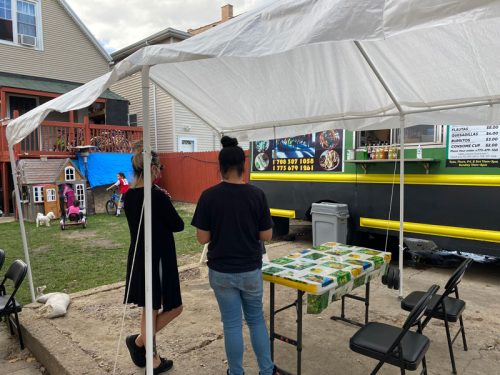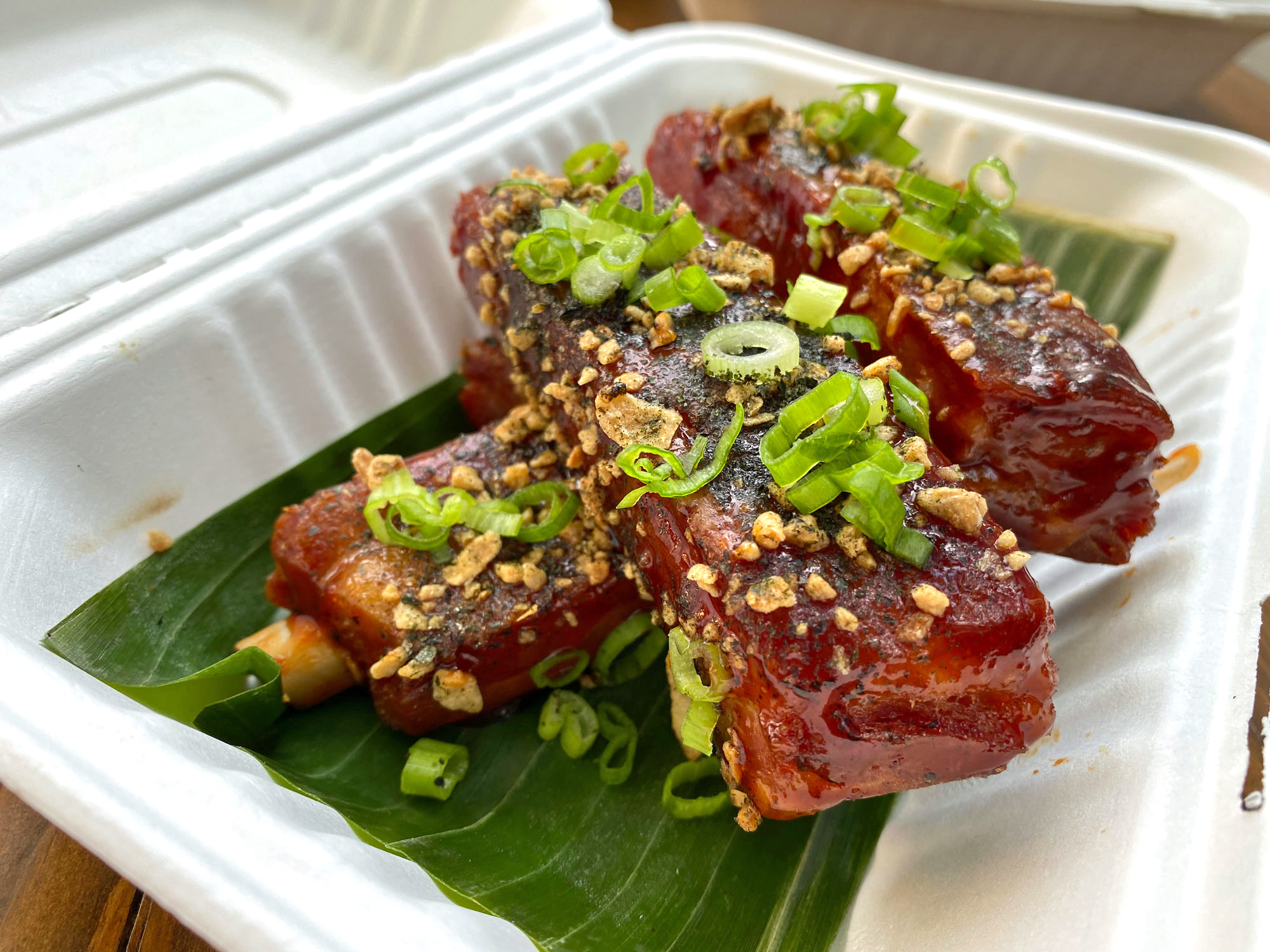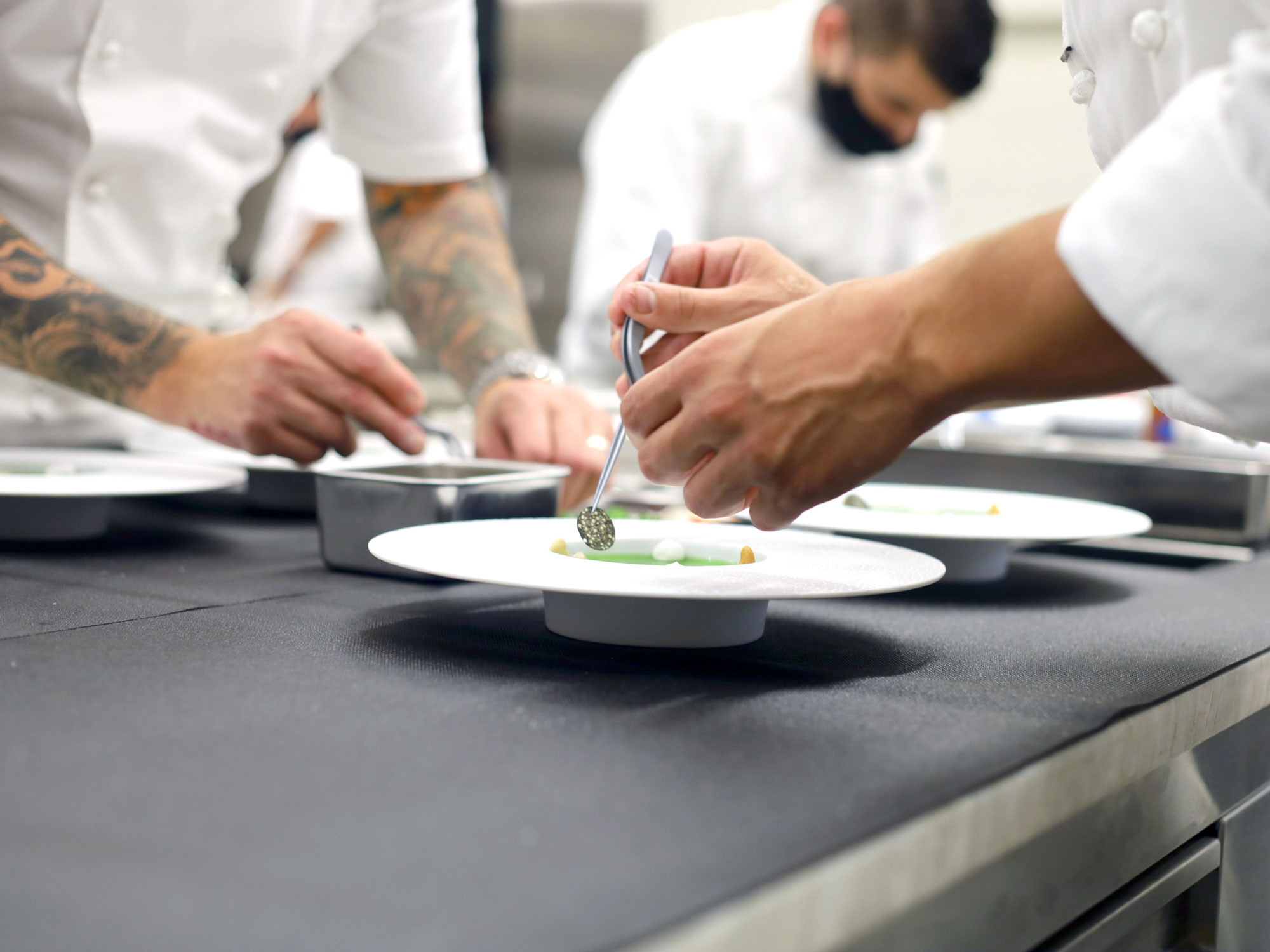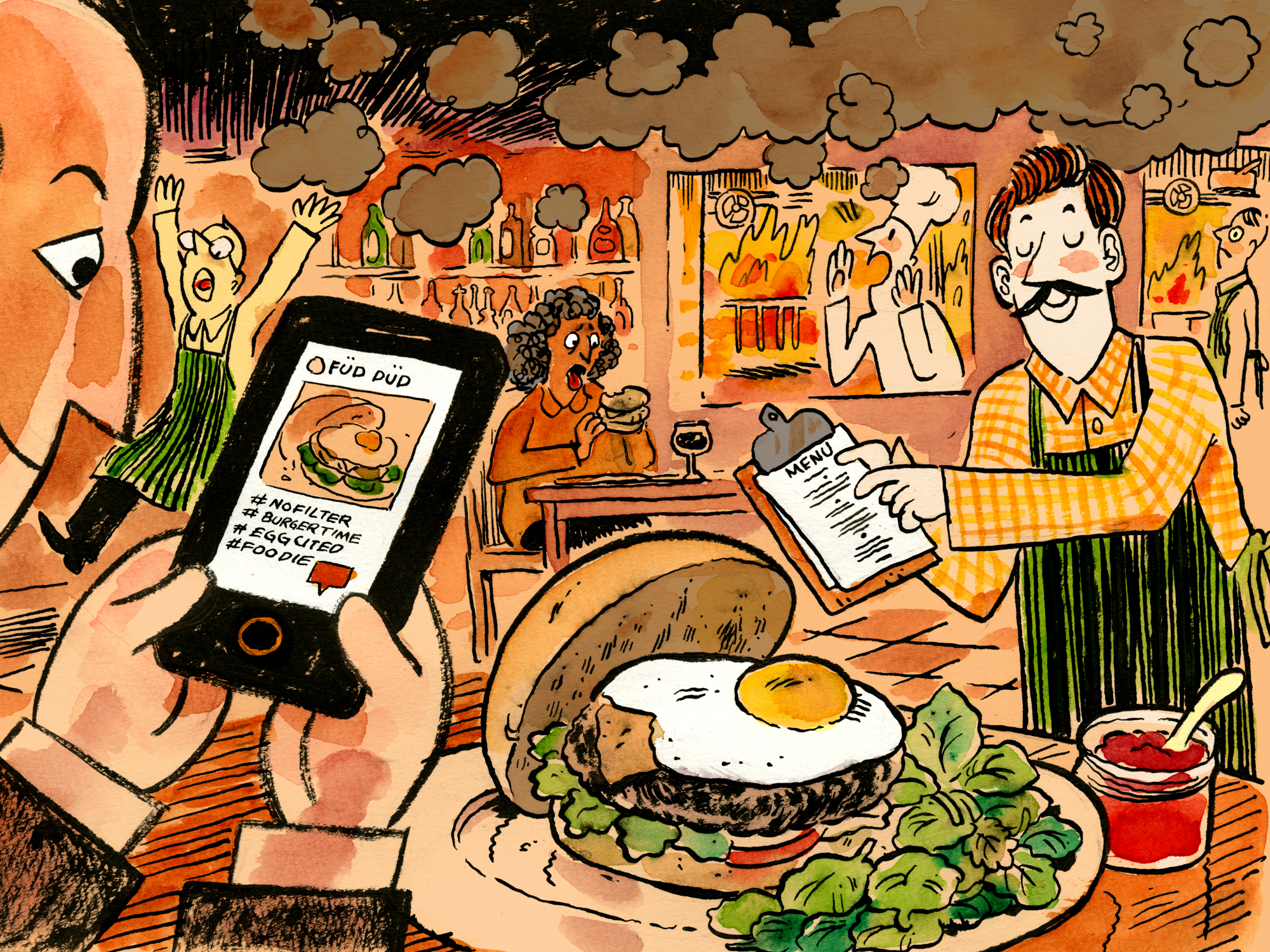AT FIRST THEY CALLED IT A PIVOT. Lockdown locked us down, fine dining restaurants transitioned to takeout, then to take-home; mom and pops explored deep cuts of home cuisine or street food trends of the homeland. Former consultants created regional Indian thalis; former line cooks innovated Malaysian pastry drops, Indonesian homestyle meals, katsu sandos. Ghost kitchens proliferated, offering opportunity alongside the same old fast food. And there was pizza. Always pizza.
Now, nine months later, it’s time to call 2020 what it has all been: a significant contribution to—and potential renaissance of—Chicago’s dining scene.
It comes, of course, as a very mixed blessing. For every winning tale of entrepreneurial spirit came the loss of two standbys and stalwarts. Pain for good people, who worked hard to feed us and support their workers and themselves. But at the risk of seeming callous to that, it needs to be said: when looking solely at the food produced, this is the most interesting the Chicago dining scene has been in years. The range has been extraordinary; the results have often matched it. It feels exciting, even novel and daring, to eat at—well, get food delivered from—Chicago restaurants again.
That is an old and unfamiliar feeling. Only four Chicago restaurants made Bon Appetit’s Best New Restaurants list over the past decade, the last being Giant in 2017. Esquire last named any the same year, when they picked Roister and the late Kitsune. GQ, it should be noted, was an OG of complaining about Chicago’s atavism: they did so back in 2018. While modern Korean innovation swept New York and LA and expressions of personal identity through food appeared everywhere else (even Dallas), our most recent “highlights” in the Before Times were the openings of roughly 27 indistinguishable food halls and a place whose signature dish amounted to sticking a can of Campbell’s tomato soup into a calzone. I’m not the first to say it; I won’t dwell on it. But we got boring.

We learned to love Sandos.
New ventures this year have been anything but dull. Jonathan Zaragoza turned his El Oso popup into a laboratory for salsas and mole, many featuring a bracing acidity missing from the polite expressions that have been the hallmark of nuevo Mexican food here for the last two decades. Genie Kwon’s pastry work at Kasama emphasized texture over sweetness in tarts, cookies, and savory danishes—a giant leap forward from the cupcakes and donuts that have dominated sweets in this town. Ethan Lim has found a harmony at Hermosa in the balance between herb and spice and fat, particularly in a porchetta stuffed not with Italian herbs but green curry. If you could get your hands on it, Henry Cai worked the same alchemy with Cantonese BBQ standards at 3 Little Pigs, the sweet and porky char siu his stalwart. Jasmine Sheth’s work at Tasting India, where rotating weekly menus—each based on a different region, state, and/or idiom—showcase a level of techniques, spicing, and vegetable cooking not seen in Chicago Indian restaurants. Pizza became a blank canvas to explore the limits and possibilities of crust; so did the fried chicken sandwich, where a suburban bubble tea shop found ways to improve on the Popeyes template.
The end of the pandemic itself will create a new void, and no one knows which new or old names will evolve in just the right way to survive that.
Cleverness abounded. Rye ingeniously paired its bagels with whipped labneh of multiple guises (e.g., smoked eggplant, melted leeks), turning Jewish breadstuffs into meze. In a similar vein, Masa Madre revitalized babka with Mexican (churro, tres leches) and Middle Eastern (cardamom and pistachio) flavors. Qbirria Factory created a hybrid quesabirria and Italian beef that works because…well, dipping spiced beef into spiced au jus/consommé always works. Jeff & Jude’s gave us the most daringly reinvented standard of the year with its pastrami sandwich, a textural marvel: the meat closer to jerky and burnt ends than the boiled sop of the delis of yore; the bread, crusty and ashy, biting back.
And, yes, this was a pizza year for the ages.
In a year where success can’t help but feel like a pyrrhic victory, we can at least say this: there is opportunity ahead. The opening of Ever, the restless adaptations of Smyth and the Alinea Group, show there will be a place for ultra-high-end dining when all this is over; the lingering question is how to sustain this reawakening among smaller, independent, and/or neighborhood spots in economic hard times. Because it’s these restaurants will keep our city moving towards a cuisine scene that better reflects both the diversity of the city and the talent it holds. This is, after all, a city where a carnitas artist also doubles as a line cook at Khan’s, the Pakistani meat paradise on Devon; where a kid who grew up in a birria joint is one of the chefs everyone follows to see what he does next. We don’t just have talent here; we have moxie.
We’re going to need it.

The future of dining.
SURVIVING IS NOT THRIVING. It’s not a given that the creative energy and possibility currently evident in the scene can be sustained. Many of the microbusinesses that sprang up and found success did so because of a void—that is, because shutdowns and limitations significantly favored takeout/delivery and enabled small operations with no overhead to compete for dining dollars. The end of the pandemic itself will create a new void, and no one knows which new or old names will evolve in just the right way to survive that.
What made 2020 so exciting was its batshit craziness: everyone—the Boka Group and Four Corners Tavern Group types more than anyone–had to adapt on the fly, at the same time; exuberance–coupled with good social media marketing–came to count as much as operational efficiency. But the punk rock spirit of pandemic cuisine can’t last, and eventually some will have to “sell out” in some ways to survive and thrive. That means accountants; that means seeking and sustaining a broader customer base; and that means putting a cheeseburger on the menu for stick-in-the-mud family members.
The start of the pandemic brought a gaggle of jeremiads proclaiming “the end of the chef” and “the end of restaurants.” The pandemic would usher out an age of the “great man theory” of American cuisine, one defined by the (white male) lone genius who lorded over his kitchen and created toxic, sexist workplaces. We were promised—in roughly 68 articles st Eater Chicago—that Mundano alone would eliminate that; unluckily timed, it didn’t last the summer.
Instead, what the pandemic did in purely practical terms was to wipe out the kitchen staff below the chef-titan, leaving him alone at the top to crank out takeout short ribs. Meanwhile, the cooks who were cut loose suddenly had the time, vision, and resources to make the most of the situation and become the boss themselves.
So the notion of the chef didn’t die, and it didn’t become the communal or collective enterprise promised by Tejal Rao. Rather, what emerged was a different kind of rugged individualist, one who huffed and puffed and innovated so the house wouldn’t blow down. Derrick Tong of Paulie Gee’s repurposed the front of the pizza restaurant as a takeout slice shop and day-old bread purveyor; he is now formalizing that vision in a slice-focused storefront due in the old Bonci space in Wicker Park. Jessica Perjes and Everado Macias, the father-daughter duo behind Hermosa’s Tacotlán, spearheaded a local quesabirria boom out of a tiny kitchen; multiple food trucks and popups trafficking in the same followed, selling quesabirrias out of backyards and driveways.

Quesabirrinnovation at Flo’s Kitchen
The same drive was evident among the majors, too, nowhere more so than at Smyth & The Loyalist, where at certain points during the year chef-owners John and Karen Shields were seemingly operating four or five concepts out of the space simultaneously. It is no small achievement to say they executed cornbread (in their barbecue pop-up) as thoughtfully and effectively this fall as the stellar caviar dish on their tasting menu this past summer. If nothing else survives and scales in 2021, may it be their restless energy and creativity.
They weren’t alone. The chef-as-entrepreneur was not initially a choice; as the pandemic dragged on, however, it became a better business model for Grant Achatz as much as Giant, a small plates star turned pizza truck. No longer did we measure chefs by ratings, reviews, or accolades; instead, what mattered in 2020 was versatility, the ability to adapt, expand, and/or enhance. Chefs did barbecue (Moody Tongue, Smyth, El Ideas), pizza (Pizza Friendly Chicken Lobo In the Pan), Jewish deli (Rye, Jeff & Jude’s). They adapted to COVID limitations, turning into all-day patisseries and short-order grills (Kasama), dry goods stores and sandwich spots (Daisies, Nine Bar Market), or spaces for other fledgling businesses (see SaoSong @ El Che, Thattu @ Kimski). They found ways.
Some of this will simply be the “new normal”: takeout/delivery offerings from places that didn’t use to, maybe the occasional side hustle or seasonal pop-up. But we’re also likely to see some novel ideas emerge as restaurateurs move from visions of a multi-restaurant empire to maximizing and monetizing the spaces they’re already in: tasting menus or tables where they weren’t expected (taco omakase, perhaps?), mergers between chefs and/or restaurants that lead to interesting collaborations or menus, more engagement and representation from under-covered/under-

Street food from 3 LIttle Pigs
THE BIG QUESTION IS HOW to support the emerging talent that has surfaced as a result of pop-ups, social media, and ghost kitchen-based concepts. Financial and operational direction from experienced operators will be required if we’re going to turn this talent and desperation into sustainable businesses.
Chicago has a few more homegrown incubation models that are instructive, if not always effective. ChowBus is one success story: it shows what’s possible when a critical mass of suppliers (namely, Chinatown restaurants) and a critical mass of people (namely, international students from Asia) are brought together in a structured and well-managed model that streamlines what customers want and restaurants can supply. We’ll see if lightning strikes twice with Quicklly, a new grocery and restaurant app focused on the Indian market that seeks to do the same with Devon. If it does, perhaps there may very well be room for a similar service that can more broadly—i.e., city-wide—serve as a virtual curator of up and coming talent before and/or as they realize their full potential. Centralizing operations like delivery and payment while providing tech accelerator-like support could create pathways for the city’s most promising culinary talent to transition to a brick and mortar and/or expand their capacity to serve a larger audience.
There have been worries that chains, who have been buying or renting spaces formerly housing sitdown restaurants, would proliferate at the expense of independents. But visit a ghost kitchen operation hosting both, in River North or the South Loop, and you’ll see a future more complementary and intertwined than competitive. One can imagine that in the wreckage of the old guard, pros and amateurs alike—buoyed, perhaps, by more favorable rents/leases and less competition—may try to enter the fray, leading to a virtual and physical land rush of sorts that quickly replenishes the restaurant scene, even as customers slow-walk returning in person. A thousand flowers may bloom—or a thousand new fried chicken sandwich places may wither.
Chicago certainly isn’t the only city whose restaurant industry is struggling; it may even be years before the struggle, at least financially, subsides here. But the emergence of a critical mass of new talent, coupled with the ambiguity of the road ahead, puts the city’s scene in a unique position to capitalize nationally–Best New Restaurant lists or otherwise—in a way it hasn’t in more than decade. If it can, it will be a decidedly different scene than that which rose to national prominence in the late aughts on the strength of the avant-garde visions of white male chefs (e.g., Achatz, Duffy, Cantu)—namely, more diverse in both the cuisine and the talent behind it. For all the individual restaurants we have lost in 2020—your Morton’s, your Three Floyd’s, your Everests–we may gain something collectively and holistically far more beneficial: a restaurant scene more vital, more accessible, and more representative of what this city is—and could be.
Longtime diner, first-time contributor, Brad Cawn formerly was a writer and editor at several print publications (remember those?) that no longer exist or barely do; he now crafts “thought leadership” (i.e., sells out…hard) on professional learning and change management, subjects on which he has written several books.
Latest
Join the Discussion
After you comment, click Post. If you're not already logged in you will be asked to log in or register with Disqus.





